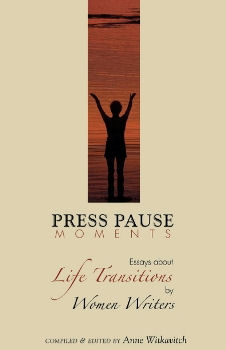|
Like
the latest trends in fashion, perspectives on point of view vary with
the seasons. So how can a writer determine the best point of view for a
story? It depends on what you want to show.
Ideas on selecting point of view
change with the latest style of jeans, and experimentation can be fun,
even instructive. Yet, to avoid wasting time—and to do justice to your
characters and story—it’s important to select the best point of view
for your piece, and to know how to work with and edit it afterward. The
good news is many of the hard-and-fast rules of the past are gone.
Let’s begin with a bit of
background. Point of view, at its most basic, means person—first (I),
second (you) and third (he or she). Another aspect is scope. Your
narrator can be omniscient (as stories go) or limited in knowledge.
Then there’s proximity, or level of intimacy. Is your narrator close to
the story or distant?
One way to understand the
various facets of point of view is to think of it as a camera and you
as the photographer. Who’s shooting the scene—you, the main character,
or someone else? Who’s in it—everybody, as in a group shot, or just one
or two people? What kind of shot is it—close-up or panorama? What style
is it—posed and portrait-like or casual?
Keeping the camera analogy in
mind, here are questions to ask when selecting point of view. As to
person (first, second, or third): Are you creating an intimate portrait
seen primarily from one person’s perspective? If so, first person is
best. Are you creating an atmosphere that’s intrusive and in-your-face?
Then second person works well. Do you want the freedom to get into more
heads than one, and is your story akin to a family portrait, with more
than one main character? Third person offers the most flexibility.
Once
you’ve selected person, you’ll have to select degree of knowledge.
Usually, the principle is the more people in your perspective, the
greater the degree of knowledge—from first person limited to third
person omniscient. The rationale relates to focus. A first person
narrator tends to focus on certain aspects of the story, because it
relates mostly to him or her. A second person narrative has the
audience in mind most of the time. A third person narrative has to do
with accessibility. It gives the writer—and reader—access to any
character almost any time.
Proximity, which relates to how
close your narrator is to the story, is harder to explain, so here’s an
example:
• Colin opened the door to his
office and found the place had been ransacked, papers strewn across the
floor and file cabinets overturned.
• He opened the office door. Documents littered the floor, and file
cabinets lay upended.
The
first sentence is a
comparatively distant perspective on Colin’s situation, as if the
viewpoint comes from a narrator other than Colin. The second sentence
comes from within Colin. It’s also
|
tighter,
and uses active voice. The
way to decide which approach works best depends on what you want the
scene to convey. If you want to keep the audience at a distance, option
one is better. If you want your audience to feel what Colin feels,
option two is your choice.
Here are common point of view
problems and fixes:
• Mixing points of view:
Generally, don’t do it. It’s confusing to the reader and largely
impossible to maintain accuracy.
• Confusion in using the omniscient perspective: Switching points of
view within a scene is off-putting. Readers won’t know which character
to side with, nor will they grasp the main point of the scene. Varying
point of view by chapter, especially for emerging writers, is best.
• Know-it-all characters who really don’t: One of the commonest
mistakes, especially in first drafts, is a character knowing something
he or she can’t know. For example, a serial killer knowing what his
victims are thinking.
• Complete lack of a point of view: This is akin to mixing points of
view. It’s as if the narrator is describing a scene from the outside,
as if it were a one-dimensional photograph, rather than from within it.
To accurately select point of
view, it’s best to have a firm grasp on your story and characters. Is
yours a personal tale, or objective? Is one character dominant, or do
you have an ensemble cast? These choices may seem academic, but they’re
key serving the work and the One who gives joy in that work.


|










